The document discusses the application of genetic algorithms (GAs) to optimize knowledge levels in an e-learning system, focusing on parameters and candidate solutions. It details the GA process, including initialization, selection, crossover, mutation, and termination, emphasizing the importance of fitness functions and solutions evolving over generations. The research aims to enable accurate evaluation of user knowledge levels using various input degrees and highlights potential future applications of GAs in different problem domains.
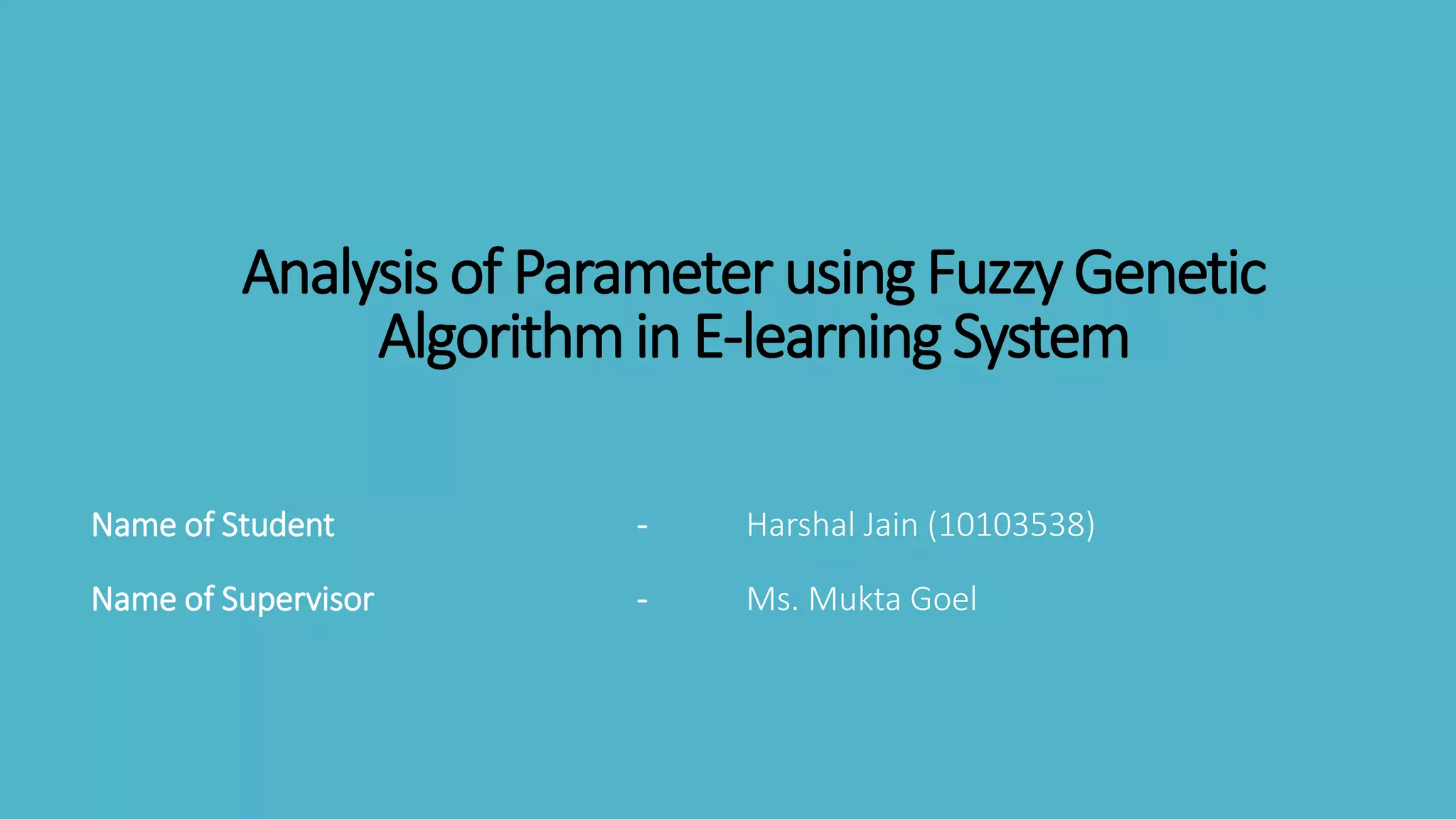
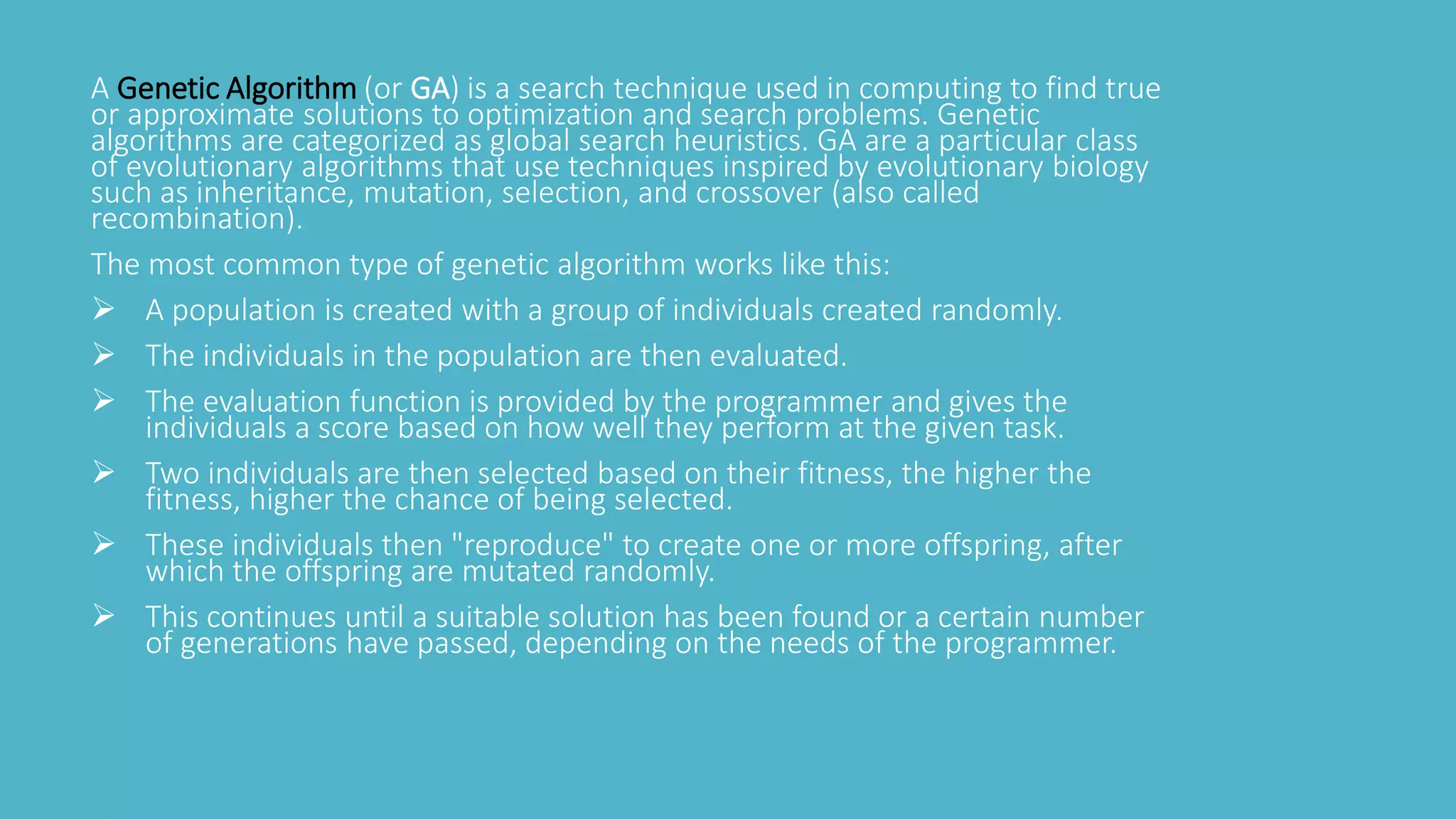
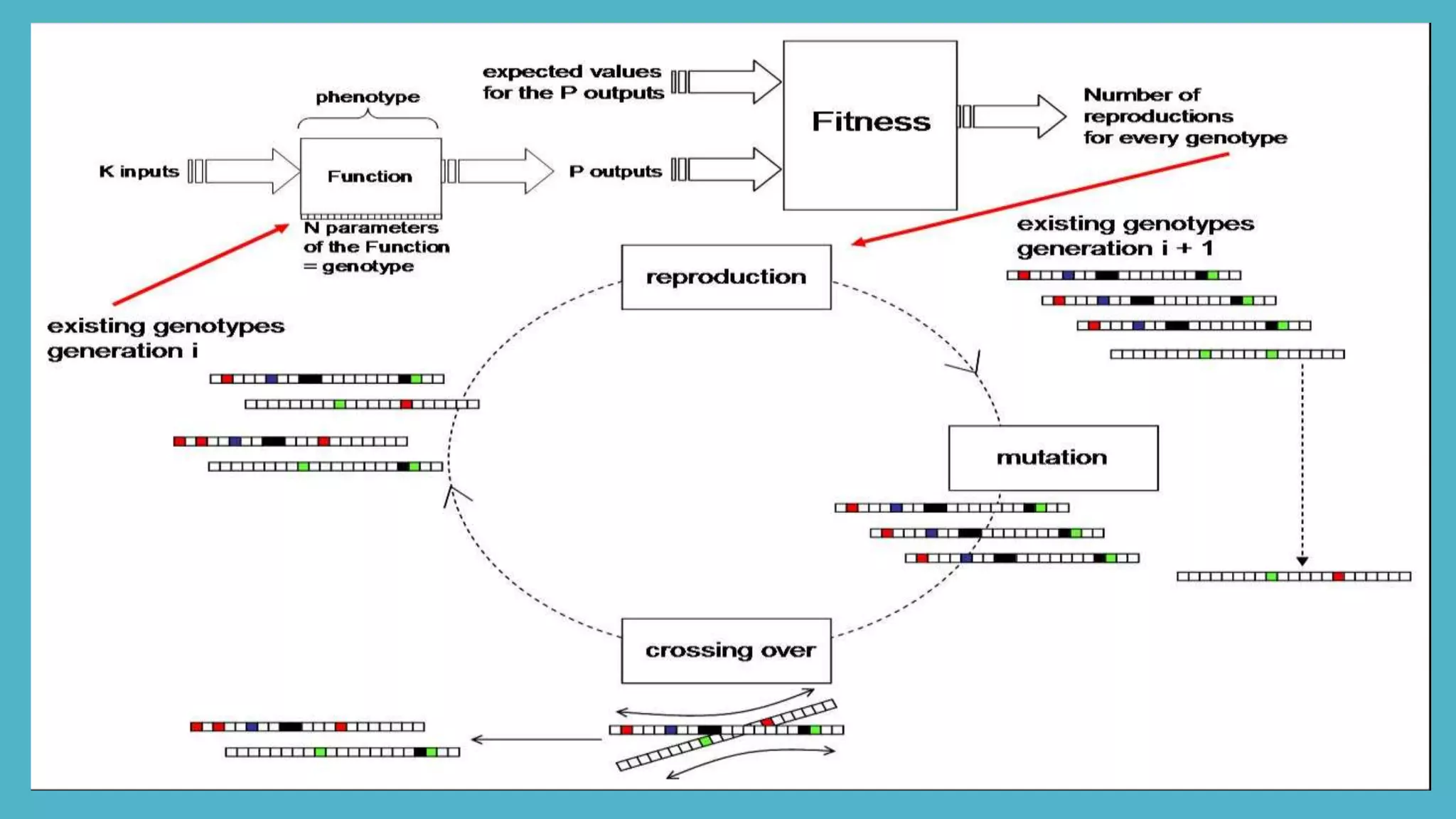
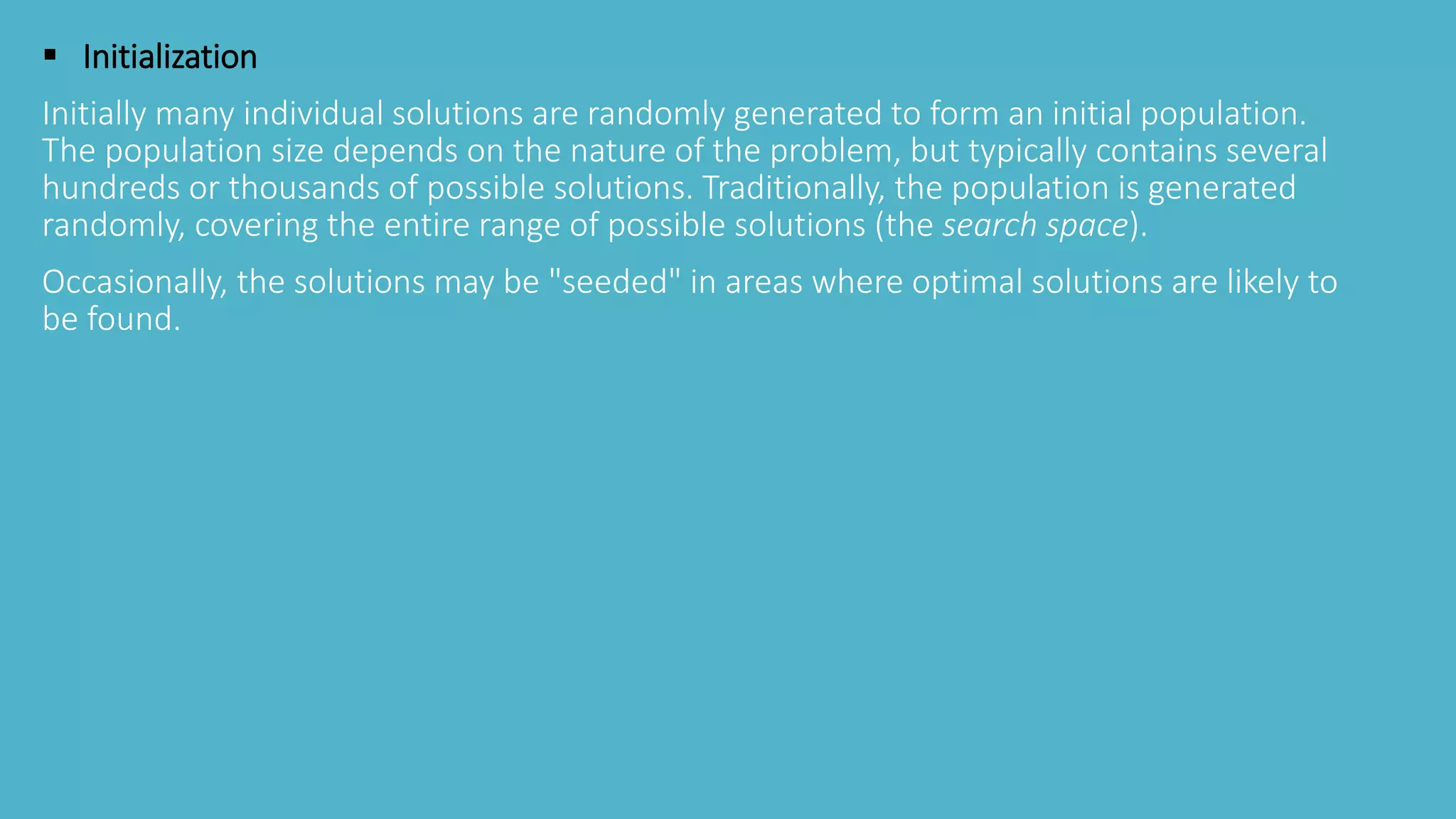
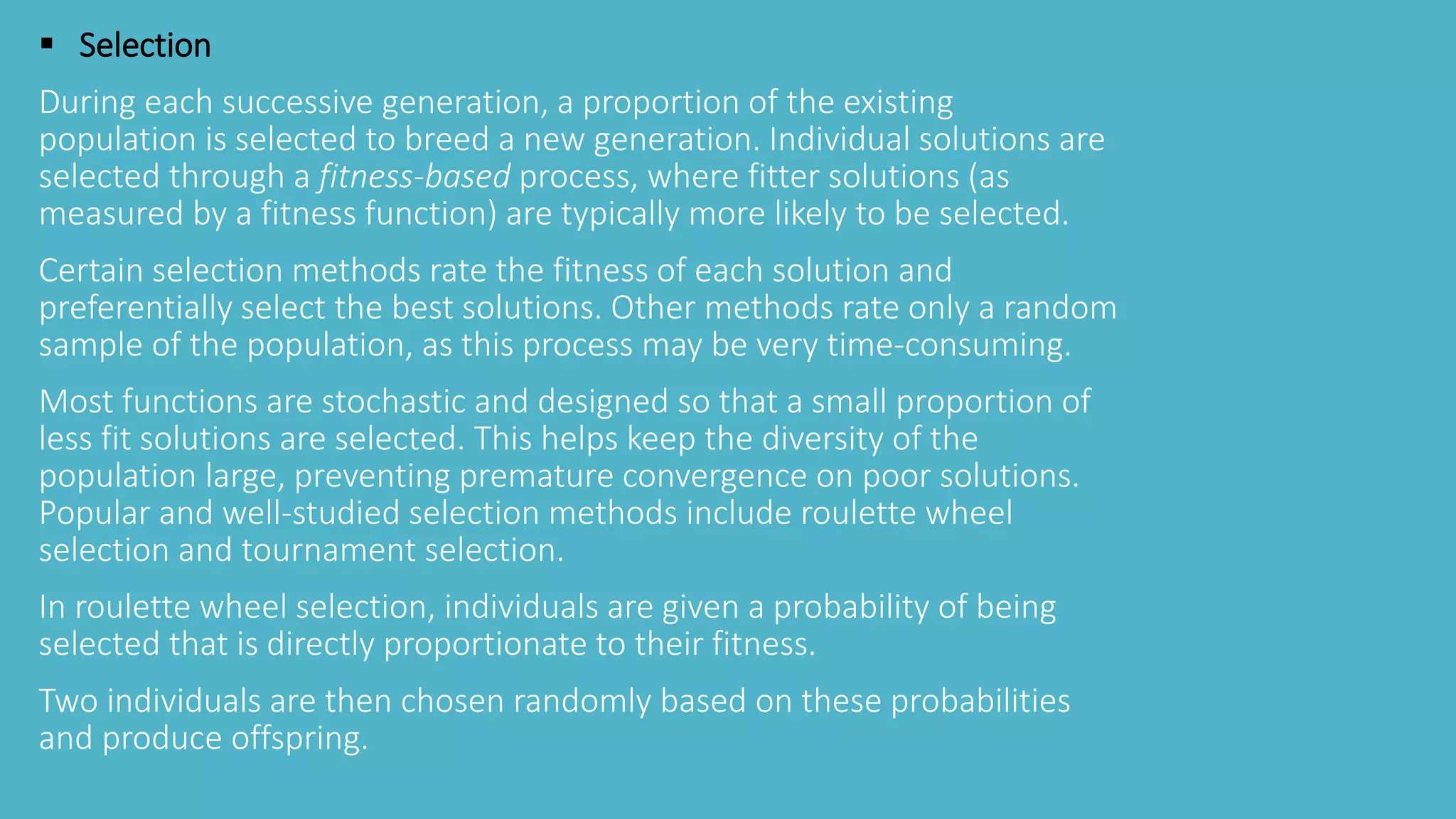

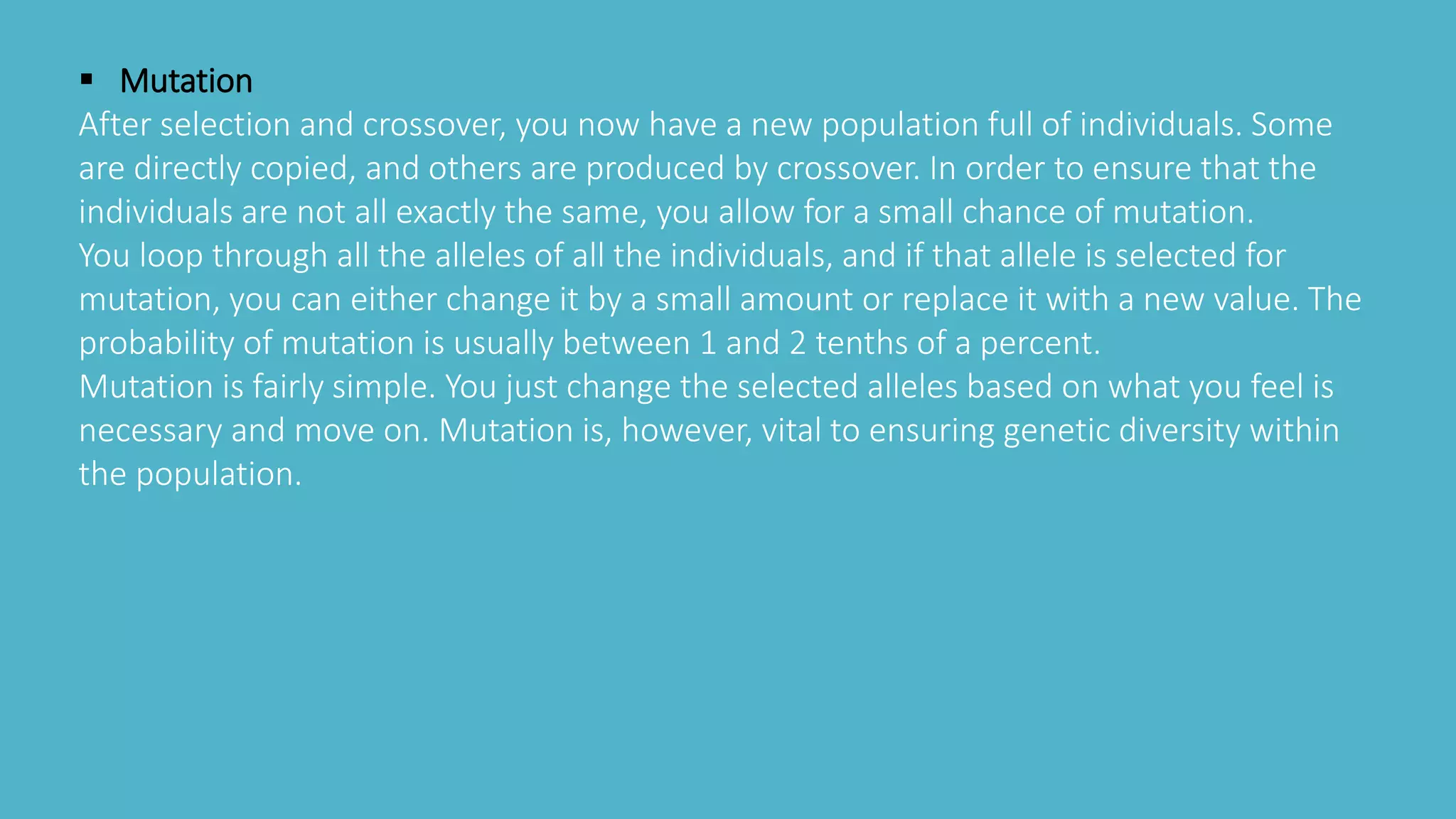
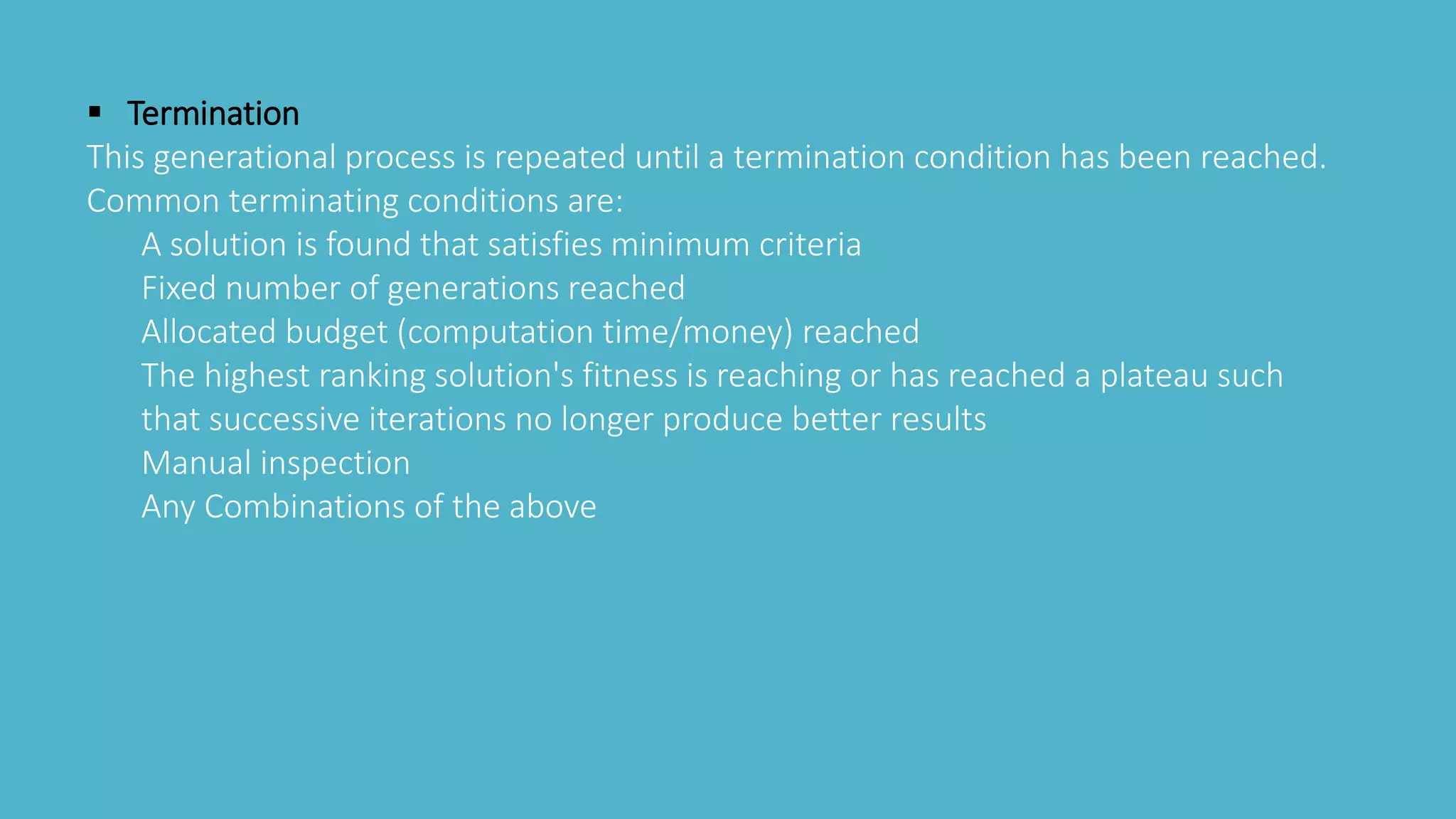
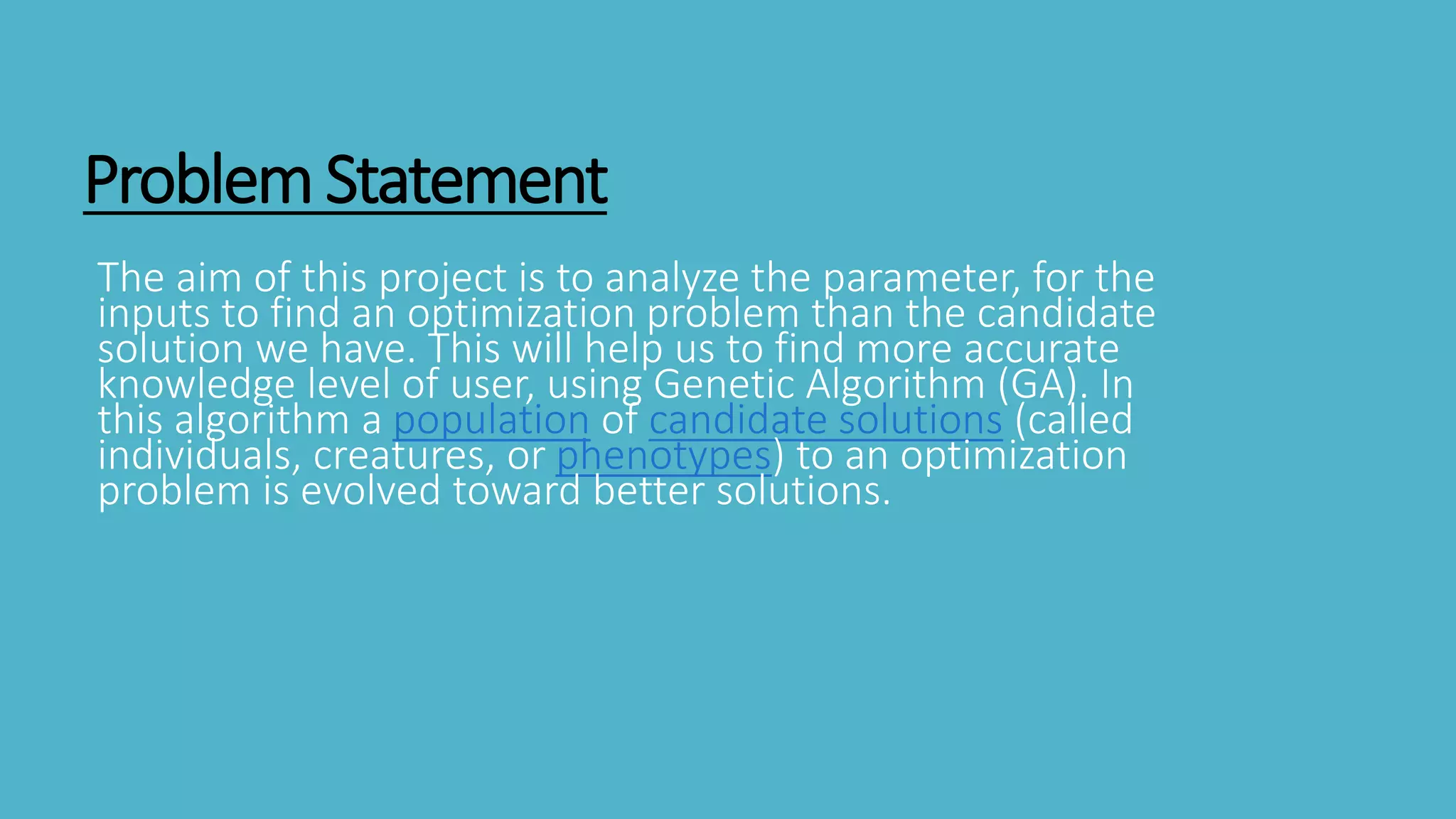

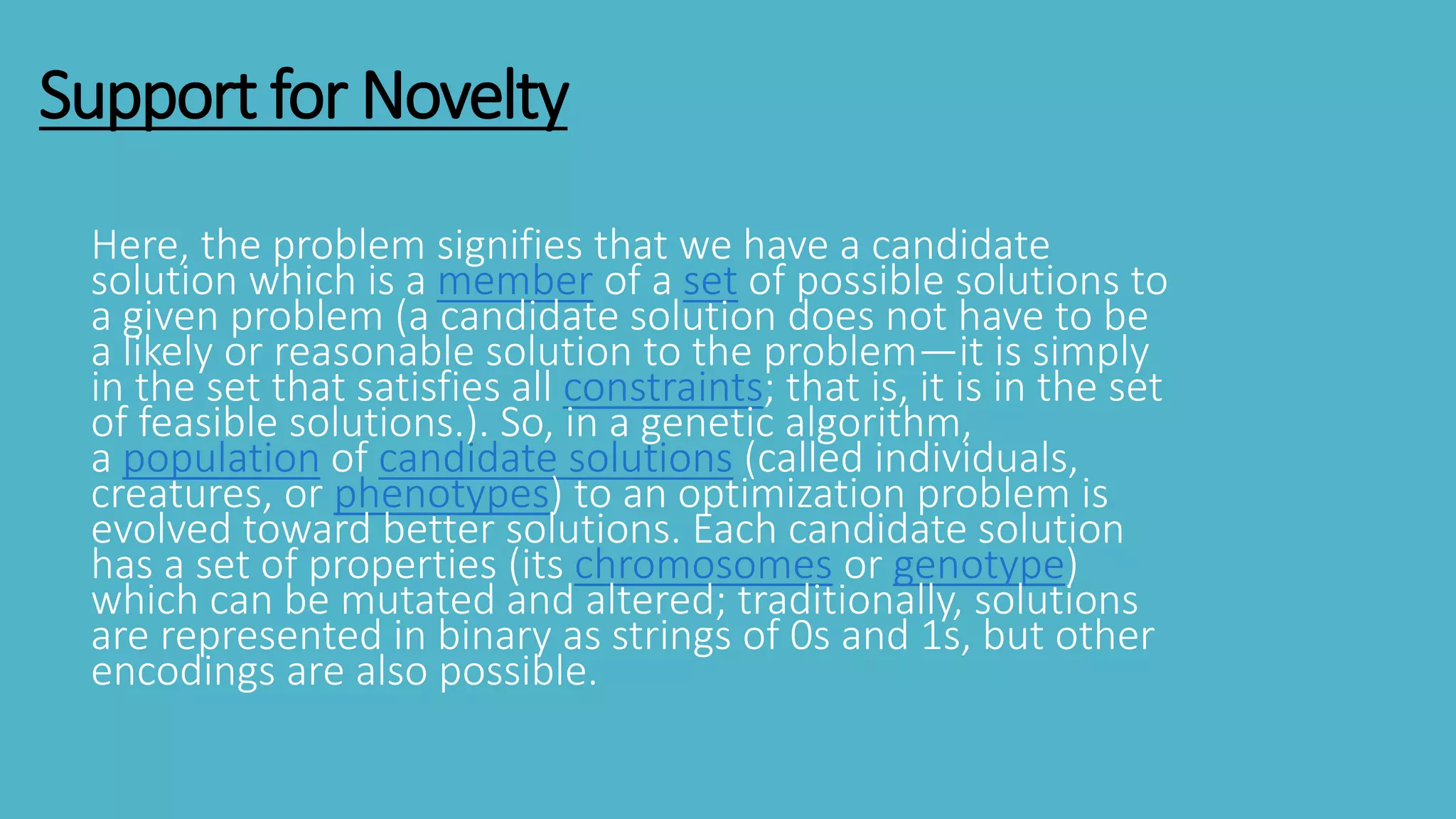
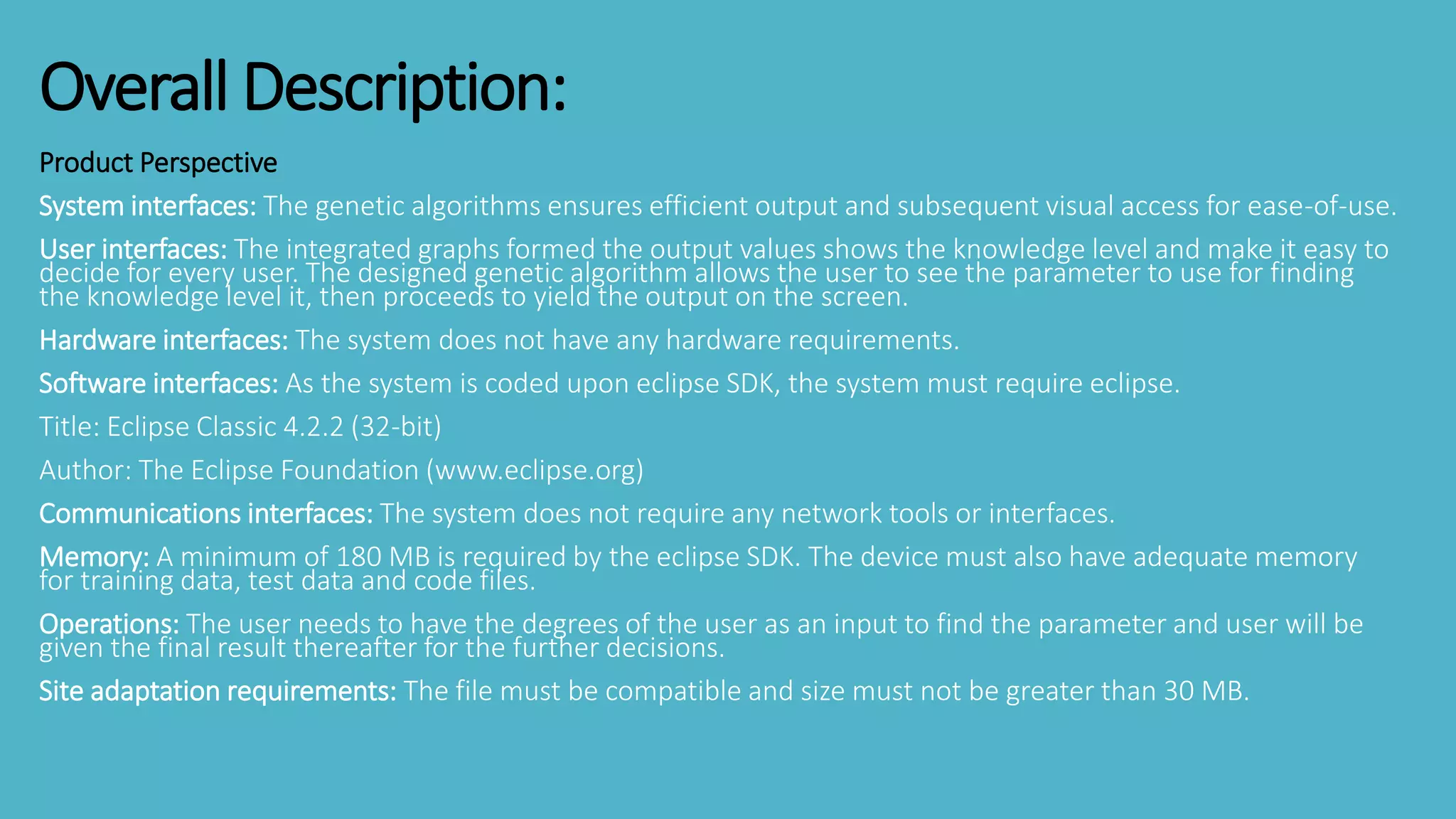

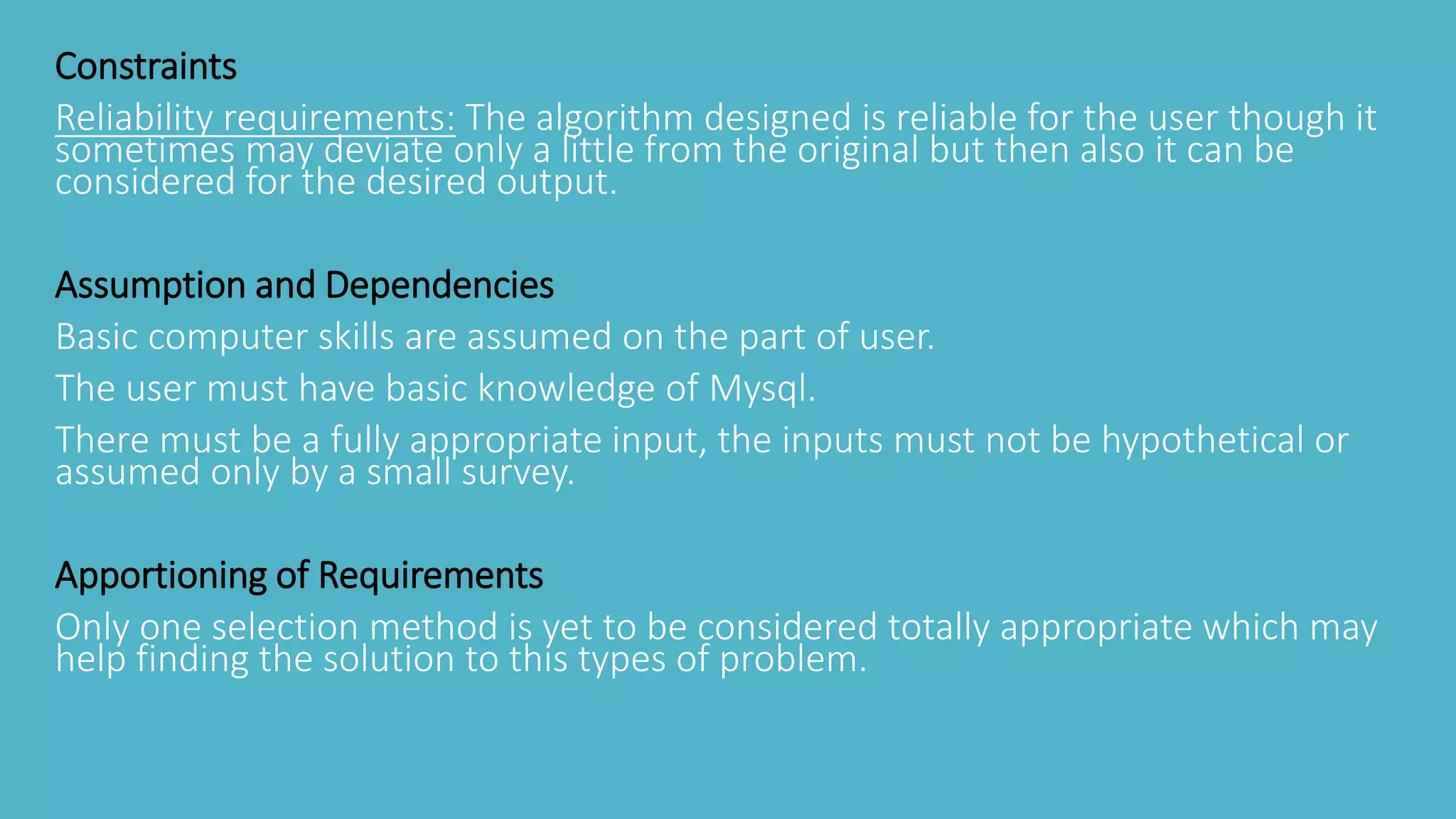


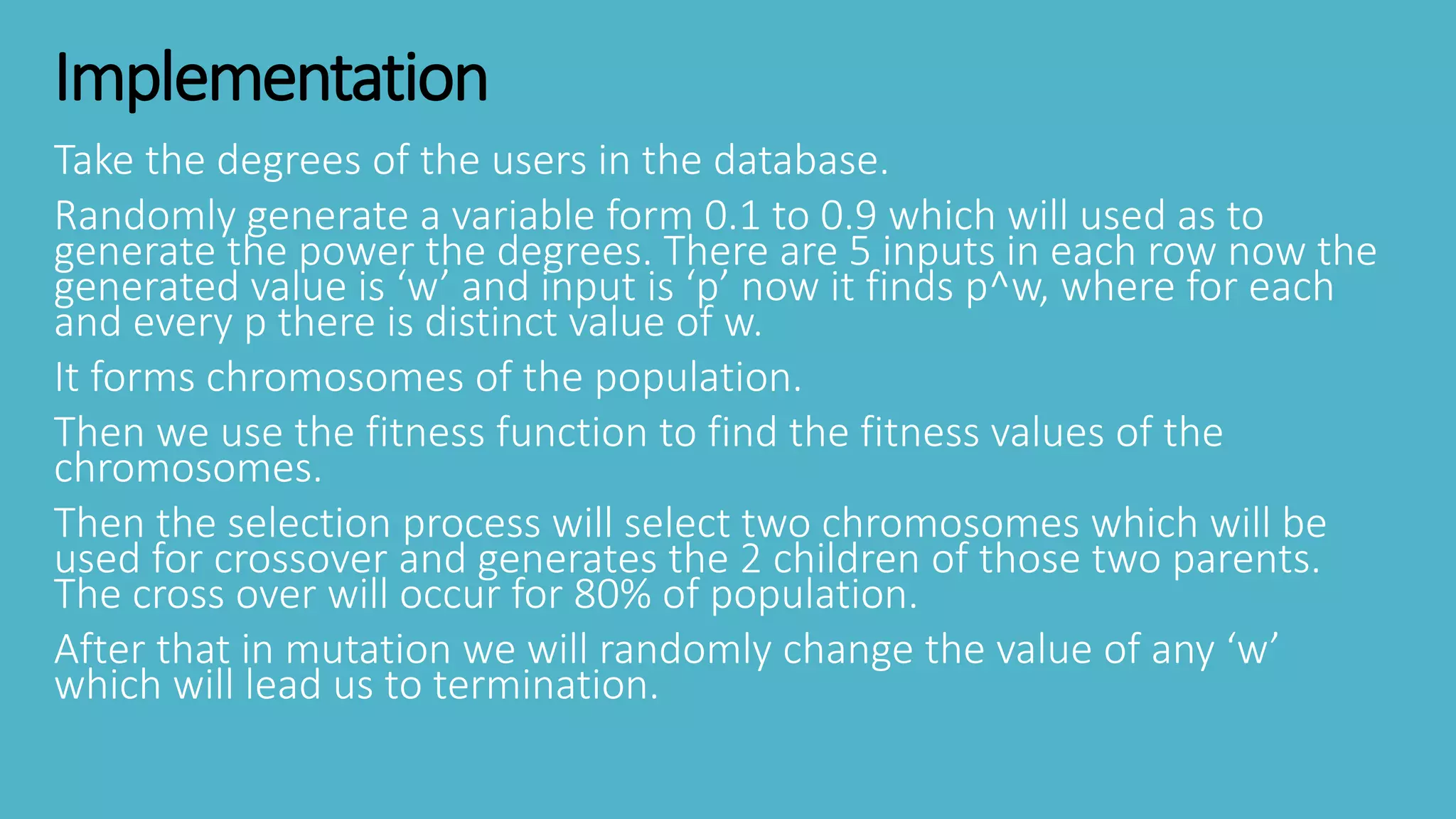
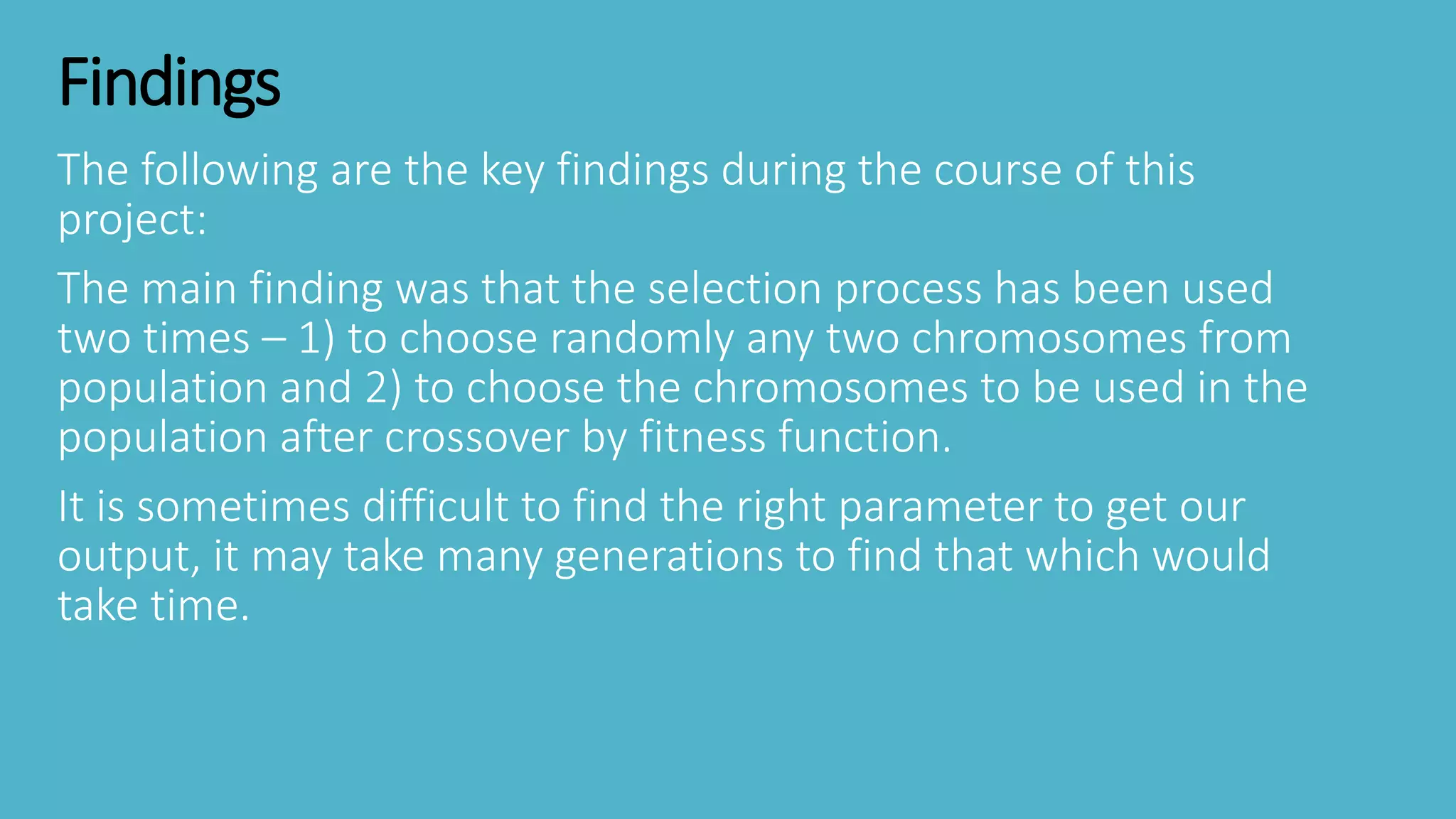
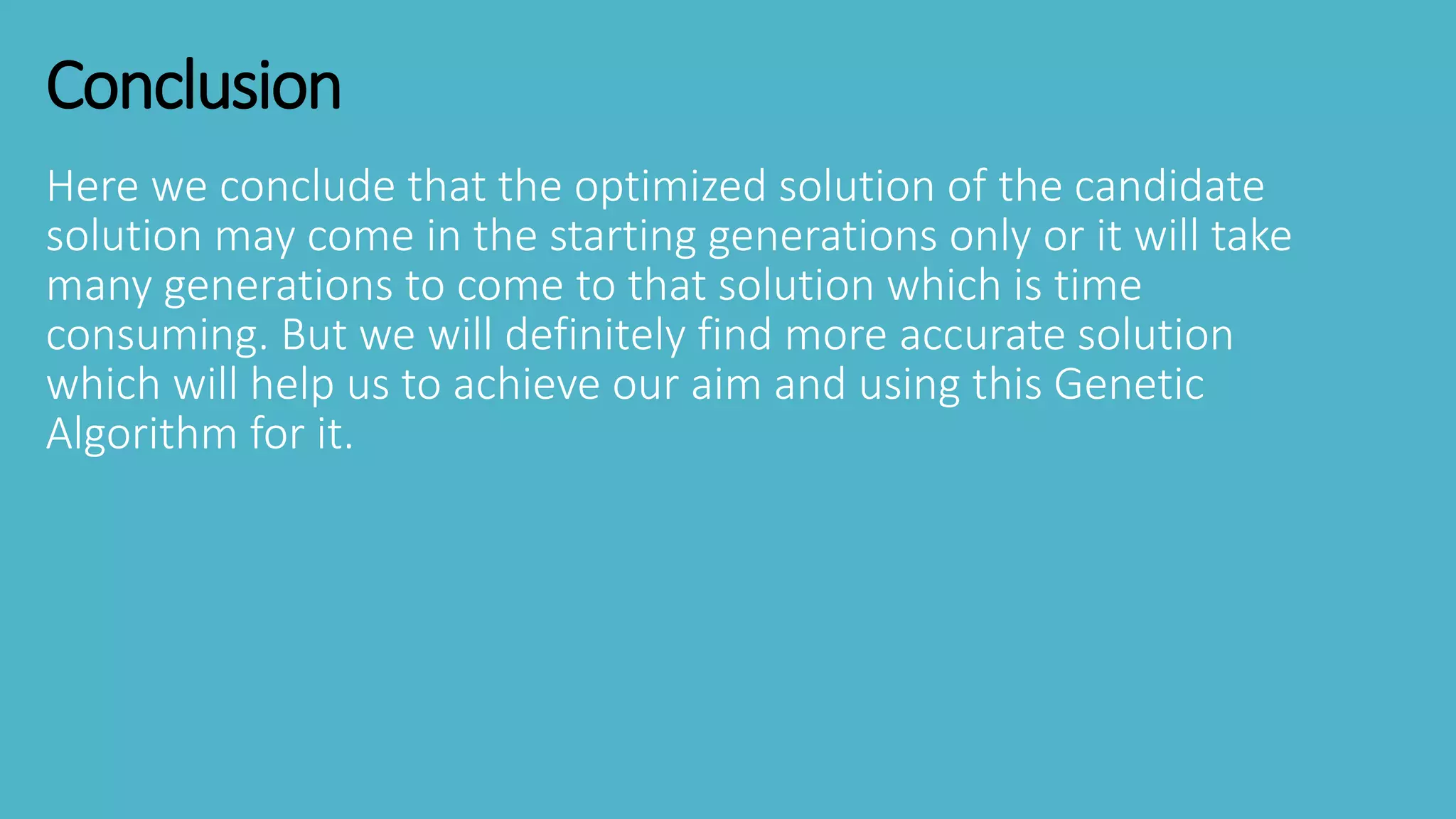
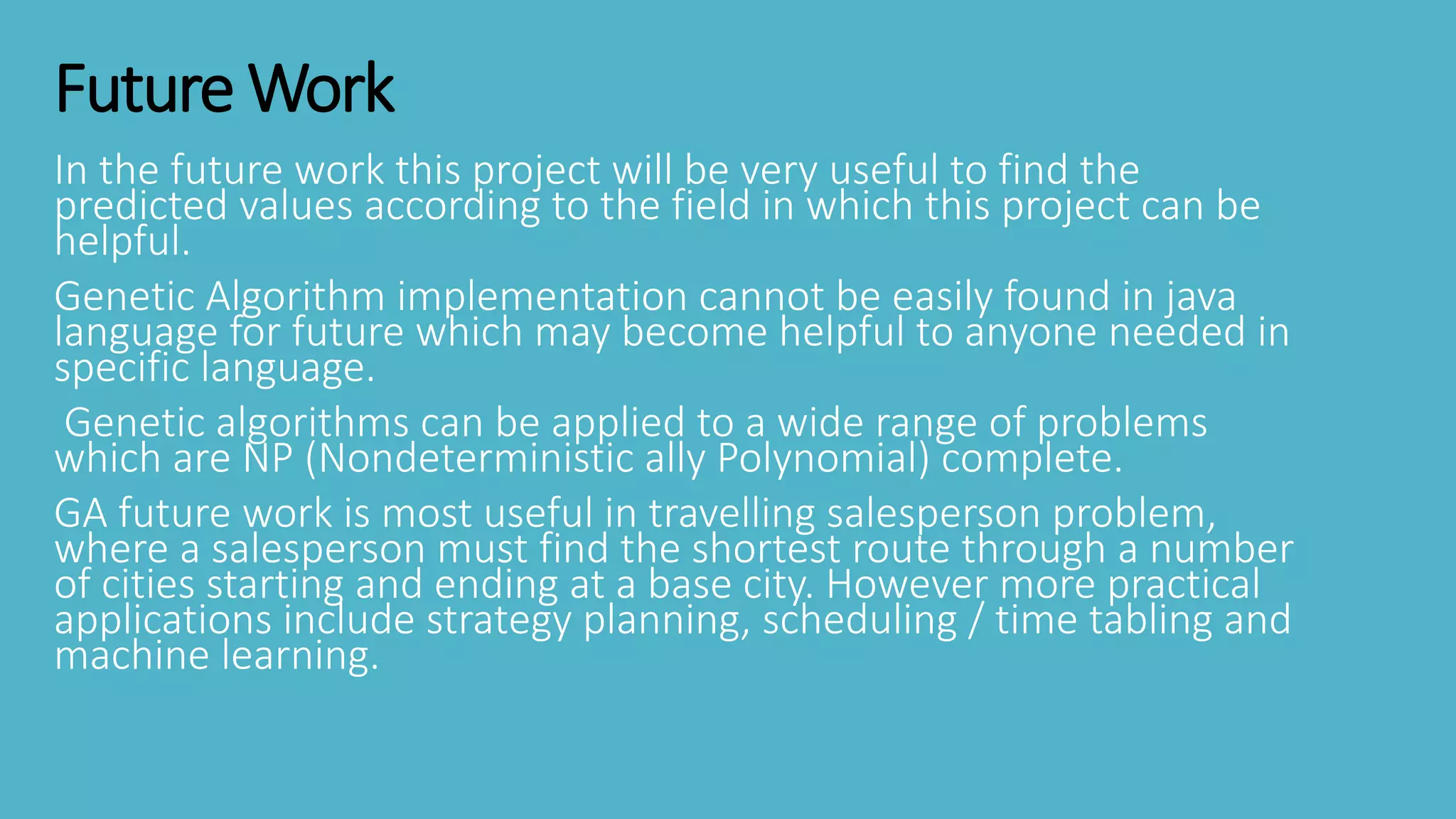
![References
Published Papers:
[1] “Marketing a web-site using a fuzzy logic approach” by IOAN
CONSTANTIN ENACHE
[2] “Ten years of genetic fuzzy systems: current framework and new
trends” by O. Cordon, F. Gomide, F. Herrera, F. Hoffmann, L. Magdalena
[3] Tuning Of Fuzzy Systems Using Genetic Algorithms by Ulrich
Bodenhofer
[4] Solving an aggregate production planning problem by using multi-
objective genetic algorithm - (MOGA) approach by Md. A. Akhtar Hasin](https://image.slidesharecdn.com/harshaljain10103538presentation-140601195131-phpapp02/75/Analysis-of-Parameter-using-Fuzzy-Genetic-Algorithm-in-E-learning-System-21-2048.jpg)
![References
Web Links:
[1] http://www.wseas.us/e-
library/conferences/2010/Bucharest/RIMA/RIMA-59.pdf
[2]http://www.researchgate.net/publication/220529867_Ten_yea
rs_of_genetic_fuzzy_systems_current_framework_and_new_tren
ds/file/32bfe50cb15ab289f2.pdf
[3]http://www.researchgate.net/publication/200048700_Tuning_
Of_Fuzzy_Systems_Using_Genetic_Algorithms/file/79e4150bde4
e2da834.pdf
[4] http://www.growingscience.com/ijiec/Vol4/IJIEC_2012_64.pdf](https://image.slidesharecdn.com/harshaljain10103538presentation-140601195131-phpapp02/75/Analysis-of-Parameter-using-Fuzzy-Genetic-Algorithm-in-E-learning-System-22-2048.jpg)